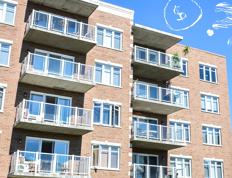



The deductible in an insurance contract constitutes the share of the damage policyholders must pay when they file a claim.
The syndicate’s insurance generally has a higher deductible than the co-owner’s insurance, given that the risk is different (higher insurance amounts, several co-owners, etc.). In addition, deductibles often differ depending on the property or risk insured. For example, the deductible for water damage may be higher than for fire.
A syndicate will frequently choose a high deductible to reduce the amount of the premium. Also, after several claims, the insurer may raise the amount of the deductible.
In a co-ownership situation, the syndicate’s deductible has a major impact on the claims settlement. In all cases, the syndicate’s deductible is considered a common expense.
It could be apportioned among all the co-owners, whether they suffered damage or not.
To recover its deductible, the syndicate may:
This special assessment is generally not covered by the co-owner’s insurance if the syndicate’s deductible is apportioned among all the co-owners.












